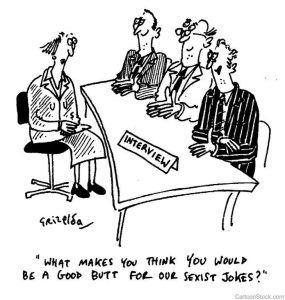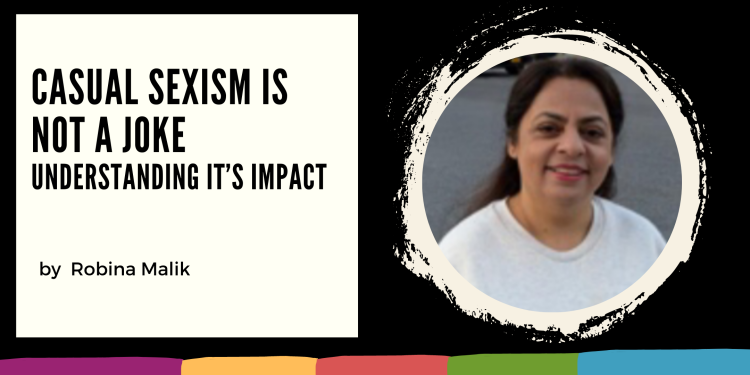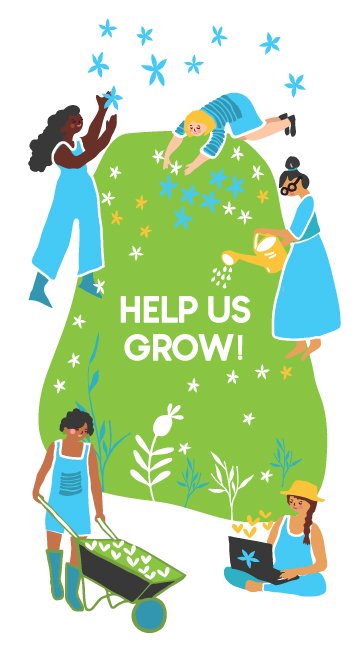Understanding it’s Impact
Casual or everyday sexism refers to sexism experienced so regularly that it becomes normalised. Casual sexism is often linked to unconscious sexist beliefs we are not even aware of. It is so culturally pervasive that it has become an implicit or subconscious norm.
We (men and women alike) are all products of our social and cultural environment. Unconsciously, we all absorb beliefs and behaviours typical in our world.

We need to take action against the ‘minor sexist aggressions’ that feed into power imbalances between men and women.
Sexism is prejudice or discrimination based on a person’s sex or gender. It can lead to a wide range of harmful behaviours, from acts of violence to subtle comments that reinforce stereotypes.
Sexist language refers to words and phrases that demean, ignore, or stereotype members of either sex. It’s a form of biased language.
There are different types of sexism that people may commonly encounter. Sexist acts include framing one sex or gender as inferior. Sexism can be conveyed in:
- behaviour
- speech
- writing
- images
- gestures
- laws and policies
- practices and traditions
Sexism can operate on different levels in society. It can be:
- Institutional: This refers to sexism that is entrenched in organisations and institutions e.g.: the government, legal system, the education system, the healthcare system, financial institutions, media and other workplaces. When policies, procedures, attitudes, or laws create or reinforce sexism, this is institutional sexism. Institutional sexism is widespread. It can be hostile, benevolent, or ambivalent. One of the clearest indicators is the lack of gender.
- Interpersonal: This manifests during interactions with others. It can occur in the workplace, within relationships, among family members, and in interactions with strangers eg: telling someone to be more ladylike, judging someone for not fitting into the predefined stereotype, making inappropriate comments about someone’s appearance, talking down to someone based on assumptions about their gender and justifying sexist behaviour by saying “boys will be boys”.
- Internalised: Internalised sexism refers to sexist beliefs that a person has about themselves. Usually, a person adopts these beliefs involuntarily as a result of exposure to sexist behaviour or the opinions of others eg: it may cause feelings of incompetence, self-doubt, powerlessness and shame. Other effects are psychological distress such as being anxious and feeling depressed which in some cases may lead to suicidal impulses.
Sexism can be categorised as follows:
- Hostile: People who hold views that are hostile and sexist may view the opposite sex as manipulative & deceitful. Hostile sexism is dangerous. It is a risk factor for sexual harassment and gender-based violence.
- Benevolent: Benevolent sexism includes views and behaviours that frame the opposite sex as innocent, pure, caring and nurturing, fragile and beautiful. In comparison to hostile sexism, benevolent sexism can be less obvious.
- Ambivalent: This is a combination of benevolent and hostile sexism. People who engage in ambivalent sexism may vary between seeing the opposite sex as good, pure and innocent and seeing them as manipulative or deceitful, depending on the situation.
Casual Sexism is Not a Joke and must be stopped. We need to ensure that women have equal representation in decision making roles. We need to promote and raise awareness of, gender stereotypes rather than reinforce them and provide digital literacy training especially for women and young girls.
All manifestations of sexism are harmful and have a negative impact on the individual and the society. To stop sexism, it is crucial to understand how it manifests and then to challenge sexist attitudes and practices at all levels — from the internal to the institutional.






